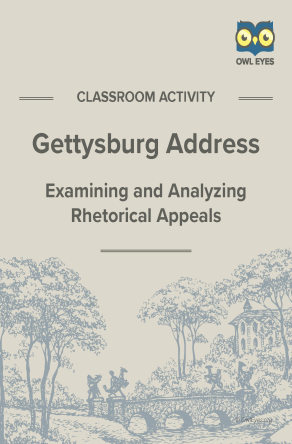Gettysburg Address Rhetorical Appeals Activity
- 9 pages
- Subject: Ethos, Logos, Pathos, Rhetorical Devices, Lesson Plans and Educational Resources
- Common Core Standards: RI.11-12.3, RI.11-12.5, RI.11-12.6, RI.11-12.9, RI.9-10.3, RI.9-10.5, RI.9-10.6, RI.9-10.9
Product Description
In July of 1863, the armies of the Union and Confederacy clashed in Gettysburg, Pennsylvania, in what would become the bloodiest battle of the American Civil War. On November 19th, Abraham Lincoln rose before an audience at Gettysburg to consecrate a new military cemetery and honor the dead. In his Gettysburg Address, Lincoln discussed the progress and meaning of the war, praises the powerful acts of the fallen soldiers, and calls upon the audience to continue the work for which the soldiers died: to restore the Union. In what is now considered one of the most eloquent speeches in American history, Lincoln employs appeals to ethos, logos, and, especially, pathos to powerfully convey his message.
Skills: analysis, close reading, drawing inferences from text, examining the impact of diction on audience
About This Document
The Owl Eyes Rhetorical Appeals activity gives students an opportunity to practice examining and analyzing the Aristotelian rhetorical appeals: ethos, pathos, and logos. Students will analyze selected rhetorical appeals from the text to determine which appeal they best represent and explain the appeal’s impact. The main components include the following:
- A brief introduction to the text
- A detailed handout on rhetorical appeals
- A list of tips for spotting rhetorical appeals
- A step-by-step guide to activity procedure
- A detailed answer key for teachers
In completing this worksheet, students will be able to examine and analyze Aristotle’s three rhetorical appeals in order to evaluate works of rhetoric and the techniques they employ.







